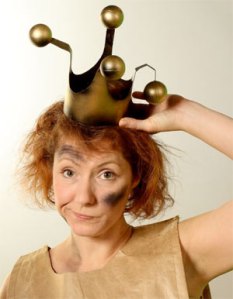When I was in high school I had an agenda with weekly quotations in it. One was by Sarah Polley, and since I can’t find the original, I’ll paraphrase: sometimes, there is more truth in fiction than in our very real lives. I loved this quotation; it resonated deeply with me. Fiction sometimes expresses feelings or fears more concisely than we can, or it helps us better understand things we’ve already experienced. We learn truths about ourselves through other stories.
Very simply put, a work of fiction is an imagined story that engages us, entertains us, or teaches us something. I know fiction has impacted me. For example, I think fictional teachers played a small role in inspiring my understanding of what it means to teach, and even in my decision to teach. Anne of Green Gables, Professor McGonagall, even Dunny Ramsay from Robertson Davies’ book Fifth Business are all very different personalities who approach their vocation passionately, but differently.
What stories have stayed with you since childhood? Which characters were so real, they’re with you still? Some may be obscure or specific to the time in which your childhood took place. There are, however, some characters we all know: Cinderella, Red Riding Hood, the Little Mermaid, Snow White…and most of these stories are hundreds of years old. These stories are entrenched in our childhood and speak to universal truths: fear of the unknown, vulnerability, the need for companionship and love. In my Grade 10 class, we will soon explore these stories, their original (sometimes horrifying!) forms, and their transformation into often sweet and charming childhood tales. Then we’ll adapt them, creating modern re-tellings.
Before we do this I want you to be aware of certain similarities and patterns that appear in stories, called archetypes. These are fundamental characteristics of stories or characters that reappear in many narratives, from all over the world. Consider the “Evil Stepmother” archetype, who appears in Cinderella, in Snow White, and even in Harry Potter (if we consider Aunt Petunia)! Why does this type of character keep appearing? (Are we unfairly taught to fear women in positions of authority? Or is it because mothers are innately powerful?)
Or think about the symbol of water as an archetype, a symbol that appears over and over again in similar ways. Water is often seen as life-giving, connected to creation, or to cleansing and rebirth. It is used as a symbol in these ways in many cultures from around the world, from many different millennia. That means that for thousands of years, people who had no way to contact each other wrote stories using water in common ways. Does this mean this archetype speaks to a universal truth?? A truth only discovered through fiction?
As we delve into fairy tales, we’ll consider similar story elements, patterns, and major characters and where they came from. Then we’ll take these characters and connect them to our world as it is today. Which characters do you remember from your childhood? Which books have you read that spoke strongly to something you’ve felt or experienced? Or that you’ll just never forget? Which fictional stories are most real for you? Share your comments below, by clicking on the link on the left-hand side of the page, near the top of this post…

Maybe one day I’ll master her discerning gaze…



